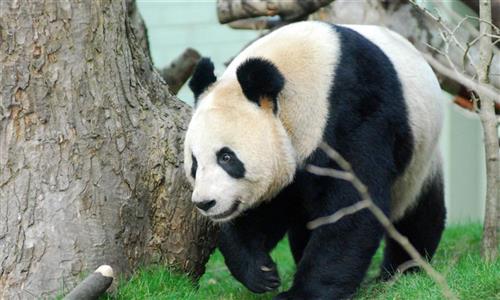China’s wild giant panda population reaches nearly 1,900 as conservation and international cooperation reinforced

Photo: VCG
China has implemented measures to enhance the protection of giant pandas and their habitats, yielding remarkable outcomes during recent years, leading to an increase in the total number of wild giant pandas from around 1,100 in the 1980s to nearly 1,900 currently, the National Forestry and Grassland Administration said on Thursday.
The Global Times has learnt from the administration's press briefing on Thursday that the protected area for giant pandas has increased from 1.39 million hectares to 2.58 million hectares, effectively safeguarding the safety and sustainable development of the wild population of giant pandas.
The International Union for Conservation of Nature has adjusted the giant pandas from "endangered" to "vulnerable," indicating that China's efforts in panda conservation have been recognized by the international wildlife conservation community, which is also an affirmation of China's conservation efforts, said Zhang Yue, an official with the National Forestry and Grassland Administration.
In terms of international cooperation, China has cooperated with 26 institutions from 20 countries in giant panda conservation research since the 1990s.
Since the 1990s, China has been actively engaged in cooperative research on giant pandas, resulting in the successful breeding of 68 cubs, said Zhang. On July 7, 2023, a pair of giant panda twins was successfully bred by Hua Ni in South Korea. Additionally, on August 24, Ding Ding successfully gave birth in Russia, with her cub later being named Katyusha.
As of the end of 2023, there are 20 institutions from 18 countries, including Japan, the US, France, Singapore and Russia, participating in cooperative research on giant panda conservation with China. The total number of giant pandas living abroad is 56, according to Zhang.
Giant pandas living overseas have become a window for promoting friendly exchanges between China and foreign countries. Giant pandas bring joy to people around the world, while also effectively promoting people-to-people exchanges.
Giant pandas play a significant role in promoting the knowledge about biodiversity conservation, raising public awareness of conservation, and facilitating grass-roots communication, Zhang noted.
The official also said that the administration has conducted on-site inspections and assessments of 23 overseas cooperative institutions in 19 countries to strengthen the protection and supervision of giant pandas overseas. In 2023, due to the expiration of agreements or age, a total of 17 giant pandas, were returned to China in accordance with the cooperation agreements, said the official.
China will increase its efforts to further promote giant panda conservation and international cooperation at a high level, including promoting the construction of the giant panda habitat conservation system, further strengthening the genetic management of captive populations and reinforcing international cooperation and management mechanisms, according to authorities.
China initiated the artificial breeding program for giant pandas in the 1960s. China has overcome three significant obstacles in the reproduction process including the challenges of inducing estrus, mating and conception, and ensuring the successful rearing of cubs, said Zhang. The global captive population of giant pandas has reached 728, with 46 successfully bred in 2023, according to the official.
Global Times



